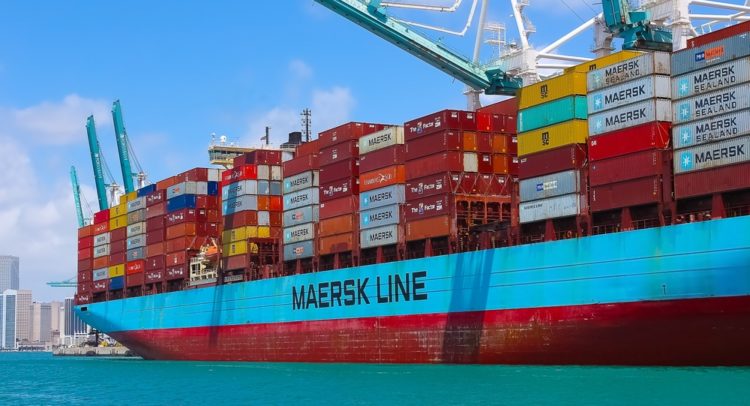The Danish shipping and logistics giant, A.P. Moller Maersk A/S (OTCMKTS:AMKBY) (DE:DP4H), is seeing its financial position weaken as freight rates tumble and inflation runs high. The current CEO, Soren Skou, will leave the company after nearly 40 years. Meanwhile, Vincent Clerc, Maersk’s CEO of Ocean & Logistics business, will take the reins of the company as the new company-wide CEO, effective January 1, 2023.
Shipping companies, including Maersk, experienced solid financial performances during the COVID-19 pandemic. In the wake of heightened demand for shipments, companies witnessed freight rates surge and even ordered more vessels to fulfill demand.
In 2021, Maersk reported over $24 billion in profits, and in the first nine months of 2022, the company has already earned over $18 billion in profits.
However, the outlook for the shipping sector for 2023 has started dimming. Maersk, in particular, is voyaging 30% fewer vessels on the Pacific line compared to 2021. Maersk’s soon-to-be CEO, Clerc, said, “You can’t deploy more capacity than what our customers need… We are going through a significant inventory correction in the U.S. and Europe, and we made significant capacity adjustments to our capacity in and out of Asia.”
What is the Problem with the Shipping Industry?
Notably, the pandemic was a profitable year for the shipping industry, but the current outlook for the sector has changed for the worse. As the port congestion opens up and retailers are bulked with heavy inventories, the demand for shipments has slowed down, leading to a drastic plunge in freight rates. Shipping companies are witnessing normalizing trends as supply eases.
Per the Freightos Baltic Index, the daily rate for Trans-Pacific shipping has fallen from a record high of $15,000 in 2021 to $1,400 currently, much closer to the pre-pandemic level of $1,500.
On the other hand, new vessels ordered earlier are ready to be shipped to the companies, but there is not much demand to put them offshore. Contrarily, while container demand is falling, capacity is expected to grow by 8% next year and by 9% in 2024, as per Braemar. To tackle the situation, shipping companies are even willing to scrap a higher number of their older vessels, cut costs, and move out of pricey charter agreements.
Why is Maersk Stock Falling?
Due to the reasons mentioned above, AMKBY shares have lost nearly 39% so far this year, while the stock gained nearly 50% in 2021. On TipRanks, Maersk stock has a Hold consensus rating based on one Hold rating.
The newly appointed CEO, Clerc, is burdened with the task of finding the right balance for Maersk. “It’s unpredictable for our customers and for us, and we will spend some months trying to find what the balance should be. But it should be higher than in 2019 given the inflation and higher fuel costs,” Clerc concluded.

Questions or Comments about the article? Write to editor@tipranks.com
















